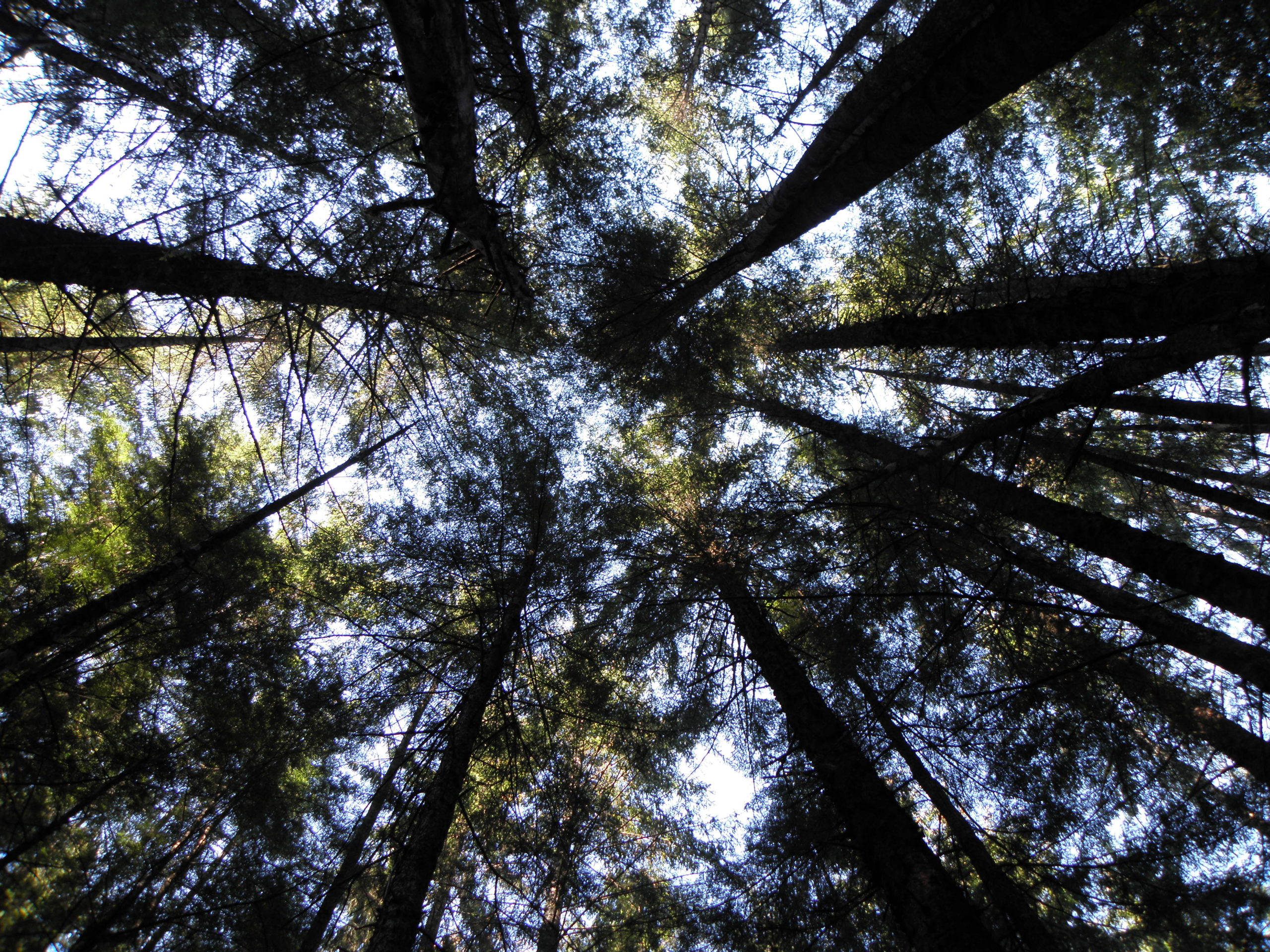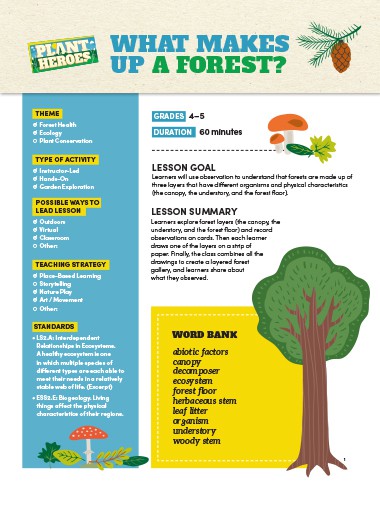
How is a forest like an onion? So. Many. Layers! But unlike an onion, each layer of the forest is made up of totally unique stuff — animals, plants, and even microclimates. The top and bottom of a forest are really worlds apart. In this article we’re going to highlight a layer that still has a lot of mystery because exploring it requires ropes and other tools, skill, strength and bravery: the canopy. If you’re a person who thinks the top is the best part of a muffin, you’re in the right place.
You might think forest canopies are “Just the tops of the trees…” but they are actually: weather buffers, major habitats, safe-havens, and really cool places to explore.
Why Canopies are Tip Top
You might think forest canopies are “Just the tops of the trees…” but they are actually: weather buffers, major habitats, safe-havens, and really cool places to explore.
Shelter From the Storm + Keeping Cities Cool
Canopies have a huge effect on both the climate of a forest as well as the the atmosphere at large. Branches, leaves and twigs catch rain—and while some is stored or filters down, a lot of water evaporates back into the atmosphere. With really heavy storms that might flood or erode areas, the rain hits the canopy first, so the effect is not so dramatic on Earth’s surface. Water evaporating from canopies also cools surrounding areas. Urban forest canopies are especially important since paved surfaces capture more heat and are vulnerable to flooding and issues around stormwater runoff.
Who’s Up There?
You can safely assume that birds are high on the list of organisms utilizing forest canopies, but you may be surprised by the diversity of plants, insects, fungi, mammals and mosses that find sanctuary in this lively layer. Different types of forests all over the world support a variety of life, but all their canopies host animal visitors and residents who eat, play, mate, hide, and sleep there. Sloths, monkeys, squirrels and flying squirrels, ants, beetles, tanagers, and jays are just a few you might recognize!
Who else is up there? People!
Forest canopies, not for the faint-hearted explorer, have remained elusive and out of reach for a lot of foresters over the years. But the field has been growing with increased knowledge and use of way-up walkways, rope and climbing systems, and drones. Even if you’re grounded right now, you can explore forest canopies virtually with these cool resources.
Climb up into the treetops in this NPR video and interview with Nalini Nadkarni a pioneering canopy ecologist (and inventor of “Treetop Barbie”).
Video Break
In this 3-minute video from Biographic, follow a UC Berkeley forest ecologist as they show how each tree is it’s own adventure by climbing a giant sequoia and bringing you along for the view!
We’ll end on a high note! Here is a compilation from the travel writers at Lonely Planet of some canopy walks around the world that are open to scientists, students and tourists.
Download our free, 60-minute, hands-on lesson, “What Makes Up a Forest.” Best for grades 4-5, it can be adapted for classroom, virtual, or outdoor learning. Learners will practice science vocabulary, observation, drawing, and critical thinking.
Written by: Angel Horne
